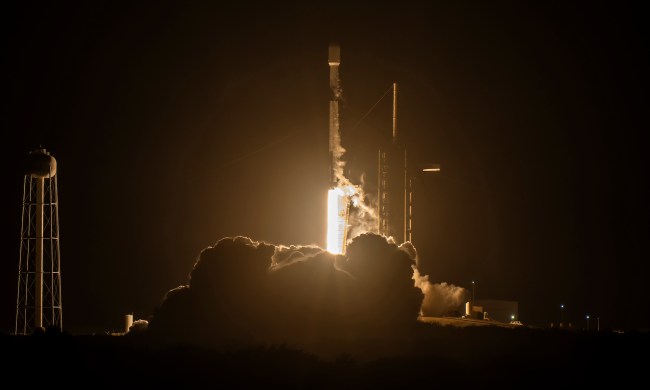It’s nearly eight years since SpaceX achieved the first successful autonomous landing of its Falcon 9 rocket following a number of failed attempts.
Since then, the SpaceX team has perfected the maneuver, bringing back to Earth the first-stage booster shortly after launch so that it can be used multiple times in other missions. The focus on reusability is at the heart of SpaceX’s flight system as it drastically reduces flight costs and allows for a greater frequency of flights.
With every SpaceX mission, it’s hard to grow tired of seeing the 135.2-foot (41.2-meter) booster coming into land — upright and automatically — just a few minutes after launch.
The latest video (below), posted online by SpaceX on Sunday, shows a clearer-than-usual view of the landing spot on a barge waiting off the coast of Florida, filmed from the rocket as it descended at rapid speed.
The landing location is often obscured by clouds or poor light, but Sunday’s weather was perfectly clear, giving interested folks an excellent look at the final seconds of the booster’s latest mission.
Falcon 9’s first stage has landed on the Just Read the Instructions droneship pic.twitter.com/bg6OerL9IG
— SpaceX (@SpaceX) June 4, 2023
SpaceX launched the Falcon 9 at 8:20 a.m. ET on Sunday, June 4. The mission launched 22 second-generation Starlink satellites to low-Earth orbit from Space Launch Complex 40 at Cape Canaveral Space Force Station in Florida.
The satellites will be used for SpaceX’s internet-from-space service, which uses thousands of small satellites in low-Earth orbit to beam broadband to customers around the world.
The mission marked the third launch and landing for this particular Falcon 9 first-stage booster, which previously launched the Boeing-made SES O3b mPOWER communications satellite, and Crew-6 to the International Space Station in March.


